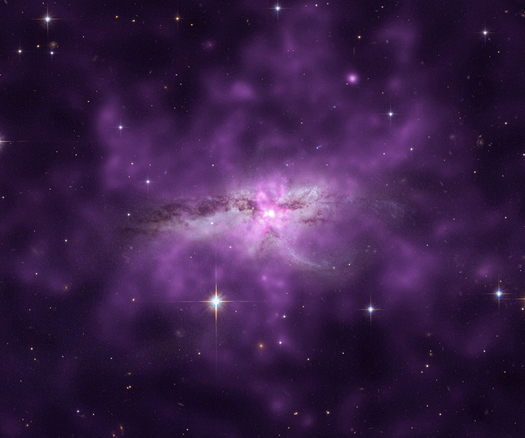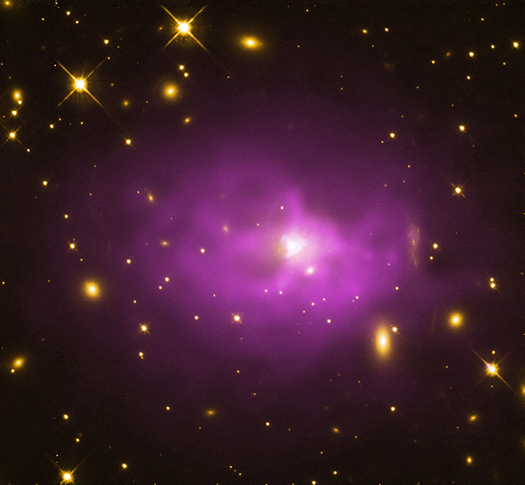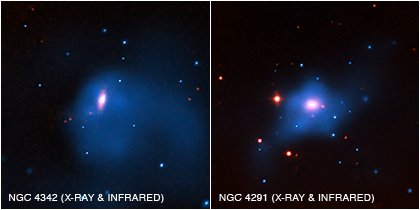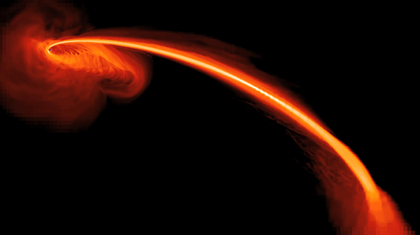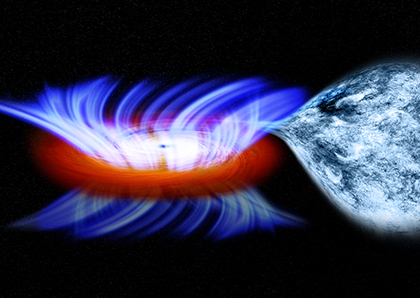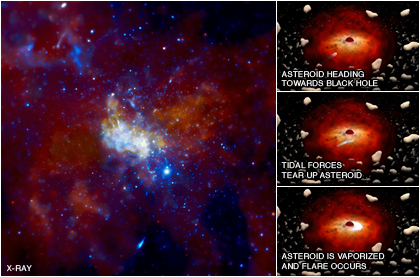Black Holes
Black Hole Hunting in the Andromeda Galaxy

We are delighted to welcome Robin Barnard as a guest blogger today. Robin is currently a research fellow at the Harvard-Smithsonian Center for Astrophysics; originally from the UK, he has greatly enjoyed living in the US for 3 years. He got his PhD at the University of Birmingham, and a MPhys (Hons) in Physics with Astrophysics from the University of Manchester; thanks to a quirky convention, he has considerably more letters after his name than in it! He was previously employed as a research fellow at the Open University.
I came to the USA to hunt black holes. Not nearby ones (that might be a bit scary), but ones in the nearby spiral galaxy known as the Andromeda Galaxy, or M31. As Grant & Naylor pointed out in the BBC TV series Red Dwarf: the thing about black holes, their main defining feature, is that they’re black; and the thing about space, the basic space color, is it’s black. This makes lone black holes very hard to see! However, black holes that are able to snatch material from an orbiting companion star can release huge amounts of energy, mostly as X-ray radiation. Such systems are called X-ray binaries (XBs), and neutron star plus normal star XBs are also possible (and indeed are more common). In our Galaxy, black hole binary systems with low-mass companions go unnoticed for long periods of time, occasionally exhibiting huge outbursts in X-rays; for this reason, they are known as X-ray transients. The similarity between known black hole X-ray transients and other low-mass X-ray transients suggests that most low-mass X-ray transients contain black holes.
Colossal Hot Cloud Envelopes Colliding Galaxies
Scientists have used Chandra to make a detailed study of an enormous cloud of hot gas enveloping two large, colliding galaxies. This unusually large reservoir of gas contains as much mass as 10 billion Suns, spans about 300,000 light years, and radiates at a temperature of more than 7 million degrees.
Never give up and trust your intuition
We are very pleased to welcome a guest blogger, Julie Hlavacek-Larrondo, who led the work described in our latest press release. Julie was raised in Montreal, Canada, and in 2007 completed a Bachelor’s degree in physics at the University of Montreal. Julie then obtained a Master’s degree in astrophysics. In 2012, she completed a PhD at the University of Cambridge. She is currently an Einstein Fellow at Stanford University.
It was during my Master degree at the University of Montreal that I realized just how fascinating black holes are.
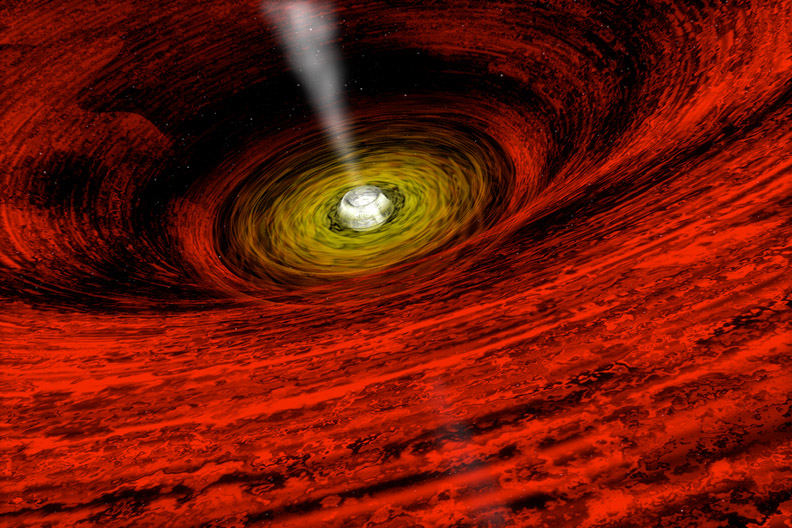
I remember stumbling upon a press release from Chandra in 2007. The Chandra space telescope revealed an image of a jet, powered by a supermassive black hole, blasting through its neighboring galaxy. What's so fascinating? Supermassive black holes are tiny objects, about a billion times smaller than the galaxy it resides in, yet, it can create jets that extend well beyond the size of the galaxy! How can something so small be so powerful?
From Super to Ultra: Just How Big Can Black Holes Get?
The black hole at the center of this galaxy is part of a survey of 18 of the biggest black holes in the universe. This large elliptical galaxy is in the center of the galaxy cluster PKS 0745-19, which is located about 1.3 billion light years from Earth. X-ray data from NASA's Chandra X-ray Observatory are shown in purple and optical data from the Hubble Space Telescope are in yellow.
Picturing the Origin of a Press Release
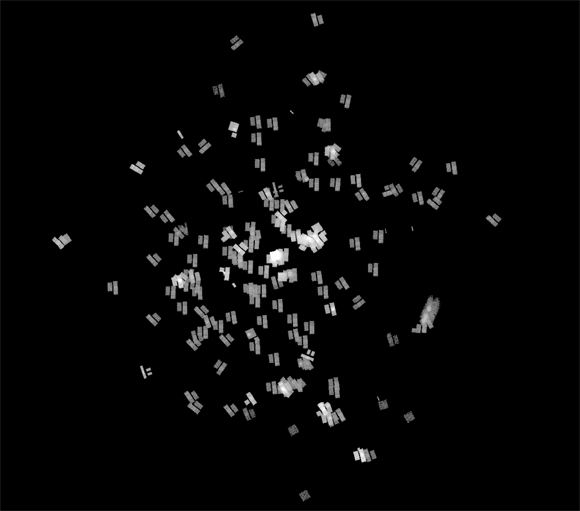
What does this image show? It looks very different from images that typically appear on our web-site, of galaxies and star clusters and exploded stars. It looks vaguely like a swarm of moths but with rectangular shapes that don't really look like wings. It might also pass for abstract art.
The answer is an astronomical one: this is a large mosaic showing Chandra observations from its archive centered on the Virgo Cluster. The rectangles are sets of charge-coupled devices (CCDs) on Chandra, showing X-ray emission from hot gas in the cluster's atmosphere, or around black holes. The rectangles often come in pairs because this is how a common configuration of Chandra CCDs appears on the sky: two square CCDs next to a set of three. The observations are scattered around because they targeted many different galaxies in and around Virgo.
Black Hole Growth Found to be Out of Synch
New results based on the two objects shown here are challenging the prevailing ideas as to how supermassive black holes grow in the centers of galaxies. NGC 4342 and NGC 4291, the two galaxies in the study, are nearby in cosmic terms at distances of 75 million and 85 million light years respectively. In these composite images, X-rays from NASA's Chandra X-ray Observatory are colored blue, while infrared data from the 2MASS project are seen in red.
Astronomers had known from previous observations that these galaxies host black holes with unusually large masses compared to the mass contained in the central bulge of stars. To study the dark matter envelopes contained in each galaxy, Chandra was used to examine their hot gas content, which was found to be widespread in both objects.
Black Hole Caught Red-handed in a Stellar Homicide
This computer-simulated image shows gas from a star that is ripped apart by tidal forces as it falls into a black hole. Some of the gas also is being ejected at high speeds into space.
Disruption of Asteroids by Supermassive Black Holes
Today we have a guest blogger, Uroš Kostić, who is currently a researcher at the Faculty of Mathematics and Physics at the University of Ljubljana in Slovenia. Here, he describes theoretical work on the destruction of asteroids by supermassive black holes, involving a collaboration between University of Ljubljana, Slovenia, and Astronomical Observatory in Padova, Italy, from 2005 - 2008. During the project, Uroš was preparing his PhD at University of Ljubljana under the supervision of Professor Andrej Čadež.
These results by Uroš were referenced by Kastytis Zubovas in the paper that we publicized last month (https://chandra.si.edu/photo/2012/sgra/). We were unable to mention the work by Uroš and his team in the release, but we felt that the originality of their work, published before the Zubovas et al. study, warranted a blog posting. Academic research invariably builds on the work done by others and to paraphrase Isaac Newton: "If I have seen further it is by standing on the shoulders of giants."
NASA'S Chandra Finds Fastest Wind From Stellar-Mass Black Hole
This artist's impression shows a binary system containing a stellar-mass black hole called IGR J17091-3624, or IGR J17091 for short. The strong gravity of the black hole, on the left, is pulling gas away from a companion star on the right. This gas forms a disk of hot gas around the black hole, and the wind is driven off this disk.
NASA's Chandra Finds Milky Way's Black Hole May be Grazing on Asteroids
This image from NASA's Chandra X-ray Observatory shows the center of our Galaxy, with a supermassive black hole known as Sagittarius A* (Sgr A* for short) in the center. Using intermittent observations over several years, Chandra has detected X-ray flares about once a day from Sgr A*. The flares have also been seen in infrared data from ESO's Very Large Telescope in Chile.

